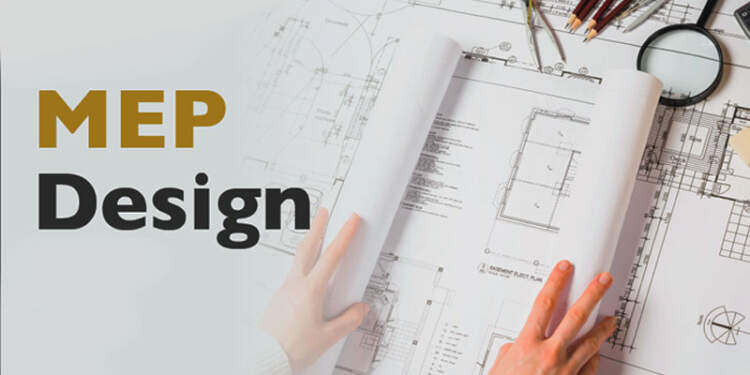Practical, effective, and sustainable buildings rely on integrated MEP (Mechanical, Electrical, and Plumbing) systems. Managing integration and MEP design are crucial components of coordinating these vital systems. In-depth information about the significance of MEP systems, their intricate design, and the significance of efficient integration management is provided in this article. Understanding these ideas is essential for architects, engineers, and other stakeholders striving to design buildings that excel in performance, comfort, and compliance.
What is the Significance of MEP Design?
MEP design is of utmost importance since it directly affects a building’s usability, effectiveness, and environmental impact. In addition to improving occupant comfort and productivity, well-designed mechanical, electrical, and plumbing systems enable appropriate heating, cooling, lighting, and water distribution. Additionally, effective MEP design results in energy savings that lessen the environmental impact of a structure. Through rigorous MEP planning, compliance with safety norms and requirements is also attained. In essence, MEP design affects a building’s operational performance, cost-effectiveness, sustainability, and overall built environment quality objectives.
Integration Management in MEP Design
Integration management is essential in MEP design to successfully integrate various systems and guarantee smooth building operation. This procedure entails:
Coordination of Systems
The electrical, mechanical, and plumbing systems must be coordinated for this process to work effectively. MEP design expertise guarantees that HVAC, lighting, electrical, and plumbing components are placed effectively, eliminating collisions and maximizing space utilization. By smoothly integrating these systems, MEP design services minimize expensive adjustments and increase overall building performance, occupant comfort, and energy efficiency. They also lower the likelihood of conflicts during construction.
Clash Detection
Modern construction relies heavily on clash detection, which is made possible by cutting-edge software. It entails using digital tools to spot potential collisions or conflicts between design elements, like MEP systems, in a structure. Clash detection ensures that problems are resolved at the planning stage, avoiding expensive disruptions and rework later by identifying these clashes before construction begins. This technology improves smoother collaboration among many stakeholders, increases project efficiency, and decreases errors, which eventually helps construction projects finish on schedule and successfully.
Spatial Optimization
Spatial optimization is an essential step in design, especially for MEP systems. It requires carefully placing elements in a building’s constrained space to maximize functionality and efficiency. Spatial optimization in the context of MEP ensures that HVAC, lighting, electrical, and plumbing components are positioned in the best possible way to prevent conflicts and enable simple access for maintenance. By intelligently organizing these systems, spatial optimization helps create well-organized, user-friendly places that satisfy functional and aesthetic needs. This results in efficient operations, reduced construction difficulties, and well-organized, easy-to-use spaces.
Workflow Synchronization
Synchronizing the workflow is crucial in building projects, particularly regarding MEP design. Aligning the schedules of several disciplines, including architecture, structural engineering, and MEP systems, is required. Workflow synchronization improves collaboration, avoids delays, and reduces conflicts during construction by maintaining harmony among different activities. Regarding MEP, coordinating with architectural and structural plans enables the seamless integration of mechanical, electrical, and plumbing systems, resulting in a successfully managed building process.
Risk Mitigation
A core principle of construction, including MEP design, is risk mitigation. It entails spotting and resolving potential flaws and problems early to lessen their impact. Risk mitigation in MEP involves foreseeing disputes, system failures, or inefficiencies and taking preventative action to avoid them. Projects become more resistant to setbacks, delays, and expensive rework by anticipatorily recognizing risks and implementing mitigation techniques. This strategy guarantees easier construction processes, improves project results, and lessens the possibility of unforeseen problems developing over the building’s lifetime.
BIM Utilization
Utilizing BIM (Building Information Modelling) entails producing digital images of a building’s structural and operational components. BIM allows diverse stakeholders to collaborate on planning, visualization, and data exchange, improving coordination and clash detection. The seamless integration of MEP components, including HVAC, electrical, and plumbing systems made possible by BIM modeling services, promotes effective design, construction, and maintenance. This technology-driven methodology results in excellent building outcomes by streamlining procedures, lowering errors, and increasing overall project efficiency.
Conclusion
Obtaining excellent building performance requires understanding MEP design and integration management. Construction projects can achieve exceptional effectiveness, sustainability, and occupant comfort levels by integrating mechanical, electrical, and plumbing systems through efficient coordination, clash detection, and spatial optimization. The complex interactions between these components highlight the vital role that adept integration management plays in creating successful, futuristic structures that successfully straddle innovation and utility.


